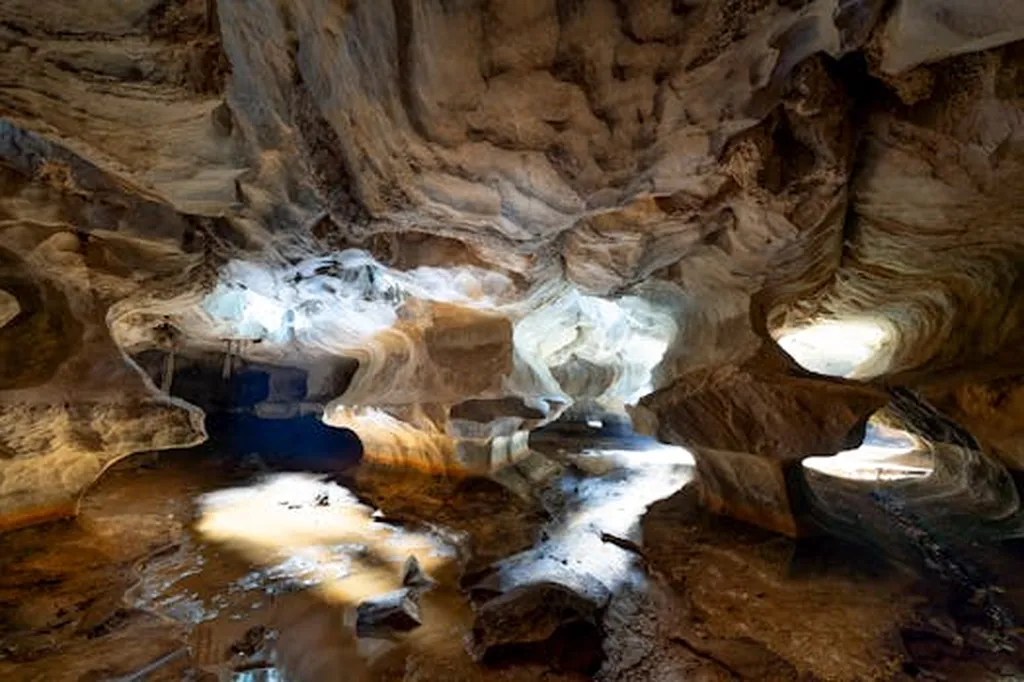In the heart of Shandong Province, China, a hidden treasure trove of geothermal energy is waiting to be tapped. A recent study published in *Carsologica Sinica* (Chinese Journal of Speleology) has shed new light on the hydrogeochemical characteristics and formation mechanisms of the karst thermal reservoir at the northern edge of the Luzhong Uplift. This research, led by Lulu Jiang of the 801 Institute of Hydrogeology and Engineering Geology at the Shandong Provincial Bureau of Geology & Mineral Resources, could significantly impact the energy sector by providing a roadmap for the effective development and utilization of geothermal resources.
The study area, nestled between Mount Tai and the northwest plain of Shandong, boasts a unique geological structure that has given rise to a large karst geothermal field. The region’s tectonic activity, influenced by the collision of the Pacific and Eurasian plates, has created a network of fracture structures that facilitate the formation of karst geothermal resources. “The combination of tectonic structures with different ages and properties provides the preconditions for the formation of karst geothermal resources characterized by the convection-conduction between low and medium temperatures in this area,” explains Jiang.
The research team analyzed 32 geothermal wells in the area, employing a suite of analytical tools such as the Piper diagram, Schoeller diagram, and isotopic characteristics to unravel the mysteries of the geothermal water’s journey. They found that as groundwater evolves into geothermal water, its hydrogeochemical types change, and the total dissolved solids (TDS) content increases. The study also revealed that the geothermal water’s temperature, chemical composition, and ion content vary depending on the depth and location within the geothermal field.
One of the most significant findings of the study is the identification of both conduction-type and convection-conduction-type geothermal systems in the area. This discovery opens up new possibilities for geothermal energy extraction, as convection-conduction systems are known to be more efficient for heat transfer. “The temperatures, chemical compositions, and ion contents and characteristics of the karst water formed in different sections of the geothermal field are different, which proves that the recharge sources, circulation depths, and circulation paths of the karst water at different depths and in different sections of the geothermal field are different,” says Jiang.
The study also determined that the geothermal water in the area is primarily sourced from paleo-atmospheric precipitation, which infiltrated the ground during the cold climate conditions of the Late Pleistocene. This finding has important implications for the sustainable management of geothermal resources, as it highlights the need to protect and preserve the recharge areas that supply the geothermal systems.
The research conducted by Jiang and her team has far-reaching implications for the energy sector. By providing a comprehensive understanding of the hydrogeochemical characteristics and formation mechanisms of the karst thermal reservoir, the study paves the way for the effective development and utilization of geothermal resources in the area. This, in turn, can contribute to the diversification of the energy mix, reduce dependence on fossil fuels, and promote a more sustainable and low-carbon future.
As the world grapples with the challenges of climate change and energy security, the insights gleaned from this study could not be more timely. By harnessing the power of geothermal energy, we can take a significant step towards a cleaner, greener, and more sustainable future. And as Jiang and her team have shown, the answers to some of our most pressing energy challenges may lie right beneath our feet, waiting to be discovered and harnessed.

